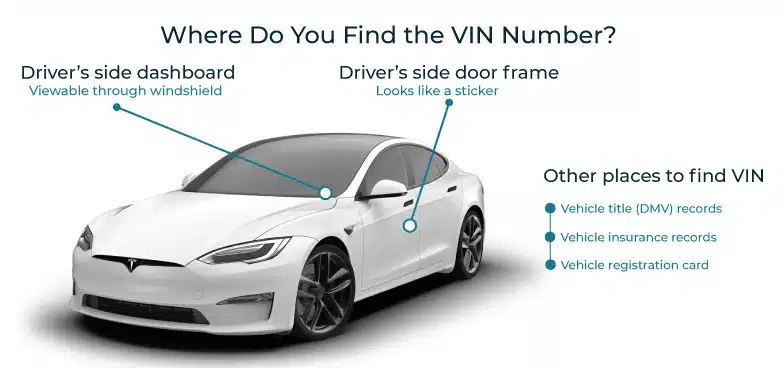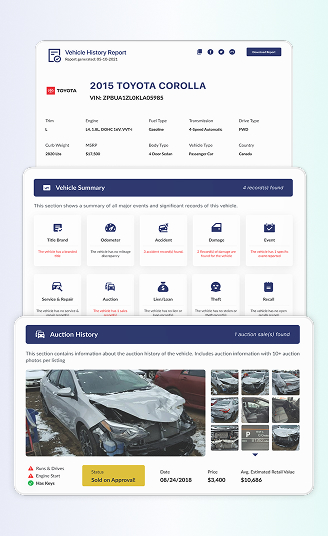
Datsun Recall Check
Enter your VIN or license plate to see any open recalls, what they mean, and the remedy. We match your Datsun to official data and show the next steps to book the repair! Works for classics and modern models.
What is a Datsun Recall?
Datsun is Nissan’s historic brand (big in the 1960s–80s for simple, light, fun-to-drive cars), then revived for select markets in the 2010s. Nissan ended the Datsun brand globally in 2022, but safety duties didn’t end; the recall law still applies.
A recall happens when Nissan or U.S. safety regulators (NHTSA) identify a defect or non-compliance that could increase crash risk. Owners are notified and offered a free remedy at dealers.
Note: NHTSA’s public VIN tool shows the past 15 years of recalls, so classic Datsuns won’t appear there, but historic campaigns still exist in NHTSA records. Use Datsun Recall Check by Detailed Vehicle History, we can decode all types of cars, even for those that have classic VINs (fewer than 17 characters)
Why You Should Check the Datsun Recall History With Detailed Vehicle History
Planning to purchase a Datsun? Do a recall check first. Using the VIN ensures hidden defects are fixed for free, protecting your safety and budget. Below are some reasons why you should check the recall:
Dodge Unsafe Datsun
Datsun recalls happen when a car doesn’t meet safety standards or has defects that could cause harm. From minor issues to serious risks, responding quickly helps prevent accidents, ensures safety, and saves you costly repairs.
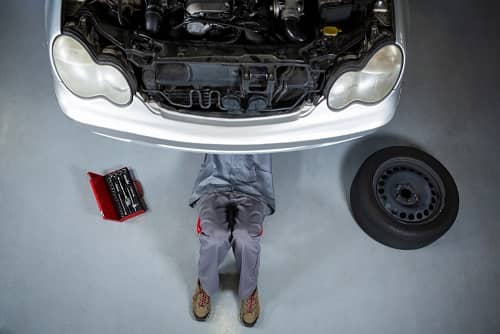

Compliance
Compliance with safety standards begins by checking your Datsun recall history. Addressing recalls ensures risks are fixed, keeping your car safe, reliable, and ready for the road.
Avoid Out-of-Pocket Repair Bills
Checking your Datsun recall history is essential for uncovering safety issues like Cold‐weather driving and any other problems. Some risks aren’t visible right away but can become dangerous if ignored. Running a Datsun recall check ensures safety, compliance, and peace of mind on the road.

How to Run Datsun Recalls?
Get the Datsun recalls report in under a minute by following these simple steps below.

Locate Your Datsun VIN
You'll need your Vehicle Identification Number (VIN). Look on the driver-side dashboard (seen through the windshield), the driver-door jamb, or in the engine bay on the firewall/strut tower. It’s also on your registration or title. Older Datsuns may have it stamped on a frame rail.


Enter your details
Type your Datsun VIN into the form above and start the check. No VIN? Use your license plate number instead.


Receive Your Datsun Recall Report
In under a minute, you’ll see your Datsun recall status and what to do next.
What is on the Datsun Recall Check?
details, along with specific data on each issue affecting your model.
- Date of recalls: Displays the official date Datsun announced the recall, so you know how recent and urgent it is.
- Affected Component: Lists the exact parts affected, giving clarity on the defect and expected repair process.
- Consequences: Explains the risks of ignoring a Datsun recall, from safety hazards to costly damage.
- Next step for the affected Datsun: Confirm if your Datsun is listed under the recall and schedule repairs. With a complete Vehicle Report, you’ll also see past recalls and repair status.
A Datsun vehicle history report includes official recall details along with title checks, accident records, mileage, and past usage. Review the records below:

Theft Records
This shows you about the vehicle, whether it was stolen or has any theft records. By checking your Datsun history report, you avoid hidden risks like theft records that could lead to legal complications or ownership challenges later.
Mileage Records
By keeping detailed records of Datsun mileage, you can maximize your allowable tax claims and avoid missing out on valuable deductions.


Tittle Check
Verifying the ownership and history of a Datsun by examining the official vehicle title records. And ensure it doesn’t have the unk, lemon, flood, hail, or buyback title records
Damage Verification
Knowing past damage records, such as salvage auction or any damage recorded to the car. Knowing past damage records lets you avoid cars that may still have hidden defects, ensuring your Datsun is road-safe.

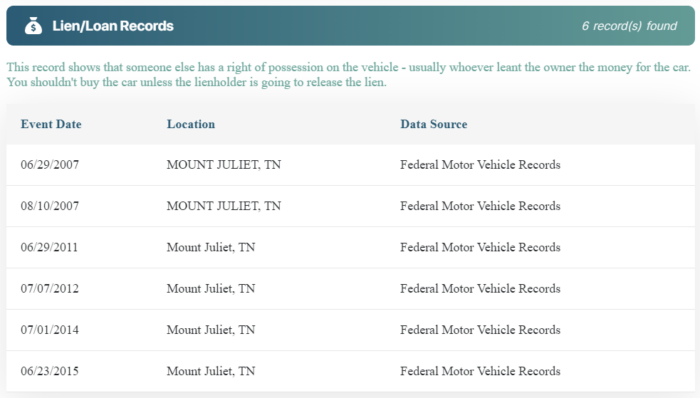
Lien/Loan Records
Lien records list dates and locations of filings. Multiple entries may signal refinancing. Verifying lien release ensures the Daihatsu has a clean title, giving you confidence that the purchase is safe and legally sound.
Warranty Status/Coverage
Checking your Datsun warranty status ensures you’re still protected. From powertrain coverage to roadside service, confirm before paying out of pocket. Access complete warranty details in our vehicle history report.

Classic Datsun issues
Datsun vehicles have faced recalls due to safety and reliability concerns. Common issues include falsified safety tests. Below are some of the Datsun issues leading to the recalls
Unintended Movement From The Park
Shift-Interlock Retrofit — 280zx & 300zx (At), 1979–1987
Some automatic-transmission Z-cars could move unexpectedly when shifted out of Park. Think: you nudge the lever and the car creeps when you didn’t mean to, bad news in a driveway or tight car park.
The remedy was to add a shift-interlock system so the lever can’t leave Park unless the brake pedal is pressed. Nissan (Datsun’s parent) ran a voluntary recall covering late 280ZX and early 300ZX, with owner notifications dated July 6, 1987; about 183,519 units were listed under NHTSA 87V098000.
Fuel/Idle Behavior In Severe Cold
(Pcv Icing & Throttle Gumming) — 280z & 810, 1975–1979
In very low temperatures, moisture in the PCV/air-regulator system could freeze, causing prolonged high idle. Add slick roads and hard braking, and you can see the risk: longer stopping distances and less control.
There was also a note about throttle-shaft gumming that could hinder smooth closing. The fix: inspect and update the PCV/air-regulator setup and correct the throttle components. Filed as NHTSA 79V242000 (report received November 13, 1979), with owner mailings starting January 17, 1980, and an estimated 295,710 vehicles affected.
Fuel Hose Clamp Deformation
Seepage/Fire Risk — 280z, 1975 (Datsun Campaign 76-0076)
On some early fuel-injected cars, the metal clamps for rubber fuel hoses could deform after service. If the clamp didn’t keep even pressure, fuel seepage in the engine bay could occur, fumes, and in the worst case, fire.
The remedy was straightforward: inspect and replace with improved “aviation-type” clamps. This appeared as NHTSA 76V076000 (reported May 25, 1976); multiple summaries list around 31,615 affected units.
Front Seat-Belt Retractor Binding
510 (Select Builds 1978–1980; Recalls Issued 1982)
Some front seat-belt retractors could bind, making the belt impossible to pull out. A belt you can’t wear is no protection at all; occupants might travel unrestrained.
Dealers were instructed to inspect and replace the retractors where needed. Filed as NHTSA 82V070000 (received July 19, 1982; owner letters September 7, 1982), with about 118,747 vehicles listed across model years such as 1979–1981 510.
Other Notable Issues
Datsun Redi-Go Fuel Hose Clip — India, 2016
Outside the U.S., Datsun’s small redi-GO hatchback had a fuel hose clip concern. A faulty clip could affect fuel supply and, in edge cases, raise stall/leak risk. Nissan’s India arm announced a voluntary recall to inspect and secure/replace the clip for free, covering 932 units built up to May 18, 2016, with owners notified that month.
Understanding the Datsun Recall Process
The NHTSA begins the recall process by investigating reported issues. If a defect is found, the manufacturer must issue a recall. See the steps of their process below
Report the Problem
Although the Datsun brand has been discontinued, owners of classic models can still report safety concerns directly to the NHTSA. These reports contribute to a national recall and safety database, helping track potential risks and preserving the long-standing history of Datsun vehicles such as the 240Z and 510.
Investigation
Once a complaint is submitted, the NHTSA follows a multi-step process to determine whether a recall is necessary.
- Screening: Complaints from vehicle owners are examined for credibility and supporting evidence.
- Analysis: Petitions for defects are reviewed in detail. If denied, the decision and reasoning are publicly posted in the Federal Register.
- Investigate the Issues: If concerns appear valid, NHTSA may open a formal investigation. This can end in either no defect being found or a recall being issued.
- Recall Management: If a recall is required, NHTSA ensures owners are properly notified, repairs are tracked, and completion rates are monitored.
Recalls
A safety recall means the manufacturer must inform owners and correct the problem. Recalls happen when a vehicle or component is unsafe or doesn’t meet regulations. Most are voluntary, and manufacturers are required to repair, replace, refund, or buy back the affected vehicle.
How Datsun Vehicle Recalls Are Handled?
When a safety issue occurs in a Datsun, three key groups are involved in the recall process. They work together to detect defects, notify drivers, and ensure repairs are completed to keep vehicles safe.
Automaker Role
Datsun was originally a Nissan brand, and Nissan remains legally responsible for any recall-related matters tied to Datsun vehicles. Federal law requires that manufacturers provide safety recall repairs free of charge for vehicles up to 15 years old, as calculated from the date the vehicle was first sold.
After 15 years, the manufacturer is no longer legally required to cover the cost of the repair. However, for serious safety issues, many manufacturers will voluntarily provide the fix for free to protect their reputation and avoid potential liability.
NHTSA’s Role
The NHTSA oversees Datsun recalls, ensuring Nissan provides free and effective repairs. They monitor compliance, track progress, and safeguard drivers and passengers from potential safety risks.
Your Role as the Vehicle Owner
Your best option is to verify the recall. For vehicles older than 15 years, it is still worth checking for open recalls and contacting a dealership. Many automakers and dealers will still provide the repair at no cost.
Get Datsun Window Sticker by VIN
Before purchasing a pre-owned classic Datsun, get the classic Datsun window sticker by VIN to see every detail, the vehicle’s exact specifications, features, and original factory options. This detailed label reveals trim level, interior and exterior colors, installed packages, safety equipment, and even the original MSRP.
Having the classic Datsun window sticker helps you confirm the car matches the seller’s description, spot any missing features, and understand its true market value. Ensuring there are no hidden disappointments after the purchase.
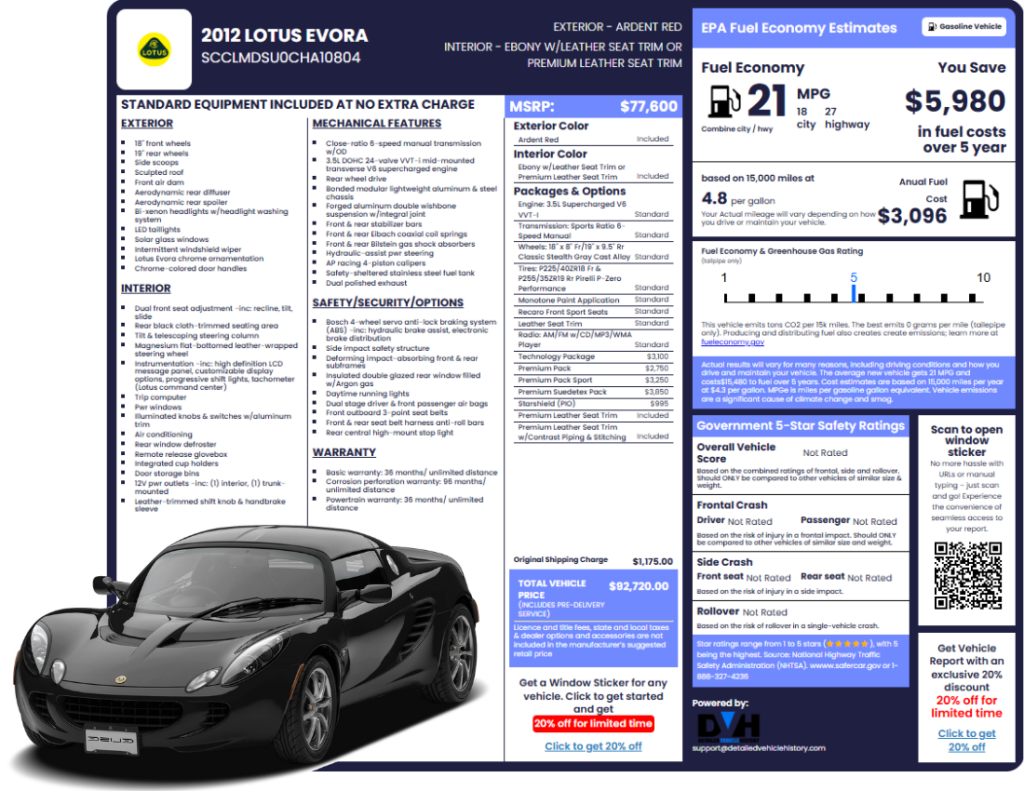
Why Use Detailed Vehicle History to Check Datsun Recall?
At Detailed Vehicle History, we provide you with beyond just classic Datsun recall information. Our VIN reports include detailed specifications, the title check, past vehicle usage, accident records, and more. Run your Datsun vehicle history report by VIN check now to drive with confidence.
Recall Check For Others Manufacturers
FAQ about Datsun Recalls Check
Can I look up if my car has a recall?
Yes. You can look up if your car has a recall. Simply enter your 17-digit VIN on our recall check page. You’ll usually find the VIN on the driver’s side dashboard (visible through the windshield) or inside the driver’s side doorjamb. No VIN handy? Just use your license plate number. In seconds, you’ll receive a detailed recall report for your Datsun.
Do vehicle recalls expire?
Most safety recalls never truly expire. Federal law requires free repairs for vehicles up to 15 years old from the first sale. After that, manufacturers often still cover serious safety defects voluntarily. Always check your recall history to confirm
Why did Nissan stop using Datsun?
Nissan stopped using the Datsun name in the 1980s, choosing to focus on a single worldwide identity. While Datsun had strong recognition, Nissan needed its corporate name front and center. The rebrand cost hundreds of millions but created consistency across dealerships and global advertising.
What models is Nissan recalling?
As confirmed in July 2025, Nissan recalled 480,000 vehicles for potential engine failure caused by VC-Turbo manufacturing defects. The recall covers the 2021–2024 Rogue, 2019–2020 Altima, 2019–2022 Infiniti QX50, and 2022 Infiniti QX55. Dealers will inspect oil pans for metal debris and replace engines if needed.

